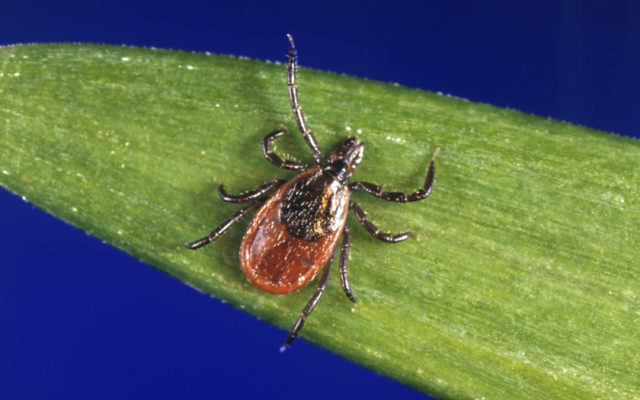
When ticks become active in the spring
By Aislinn Sarnacki, Bangor Daily News Staff
Under snow and ice, disease-ridden ticks wait out the winter in Maine. Come spring, they emerge to roam the landscape, searching for their next host.
Sixteen species of ticks have been identified in Maine, but it’s the deer tick — also known as the black-legged tick — that’s a real danger to people in early spring.
“The deer ticks tend to emerge the earliest,” said Griffin Dill, who manages the Tick Lab, located in the new University of Maine Cooperative Extension Diagnostic and Research Laboratory in Orono. “Then, once we hit the end of May and June, it starts to become sort of a free-for-all and other tick species are becoming active as well.”
Deer ticks are so hardy that they’ll sometimes start to move around during warm spells in January and February, Maine’s coldest months. But it’s not until early spring that they start to roam the landscape in high numbers, Dill said.
“They can become active any time it’s above freezing, but once we hit 40 degrees, they can become particularly active,” he said.
In the early spring, adult deer ticks start to crawl around and seek a host to feed upon. In Maine, this host is often a white-tailed deer, hence the pest’s common name. However, a human or dog can also serve as suitable hosts.
To find a host, deer ticks crawl up vegetation and extend their legs, waving them through the air in a behavior known as “questing.” The goal is to snag a potential host as it passes by. (This is one good reason to avoid walking through tall grass and underbrush.)
Once a deer tick finds a host, it crawls around on its body until it finds a suitable spot to bite and consume blood. In the process, it could transmit a variety of serious diseases including Lyme, anaplasmosis and babesiosis.
But that’s not all. Adult deer ticks also search for mates while on a host, Dill said.
“They can mate off hosts, but primarily they tend to find each other on the host,” Dill said. “That’s where deer actually play a really important role in the deer tick’s life cycle. Male and female ticks are able to find each other on deer and other large animals. That’s their method of finding each other because they’re limited on the landscape in how far they can move horizontally.”
The Maine Tick Lab provides a service in which members of the public can send in ticks (which are often found embedded in their body or a pet’s body) to be identified and possibly tested for pathogens. The lab receives the most tick submissions in the spring and fall, which indicates that people run into ticks more often during those times.
Deer ticks thrive in warm, wet conditions. They’re vulnerable to drying out, which is why they often become scarce during summer dry spells.
“A lot depends on the weather,” Dill said. “Last year we had really hot, dry conditions in the middle of the summer and so that really impacted the immature nymphal tick activity. Our submission numbers were down during that time, and when going out in the field, finding nymphal deer ticks was a challenge.”
Winter weather has less of an impact on deer ticks because they typically find shelter under fallen leaves and other debris, and snow acts as a protectant as well. Still, research has shown that deer ticks can die if left exposed to the elements on an especially cold winter day.
“I certainly didn’t see any weather patterns this winter that made me think that ticks were going to be killed off in any way,” Dill said. “We had some freezing and thawing cycles, which can impact arthropods of all types, but ticks tend to be pretty hardy.”
When spending time outdoors this spring, even before the snow has completely melted from the landscape, people should be on the lookout for ticks, Dill said. Protect yourself from ticks by wearing protective clothing, avoiding tick habitats and conducting regular tick checks.
As soon as the temperature rises above freezing, there’s a chance you might just encounter this dangerous pest.